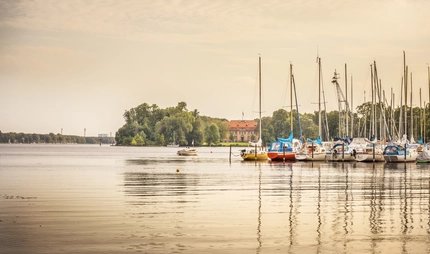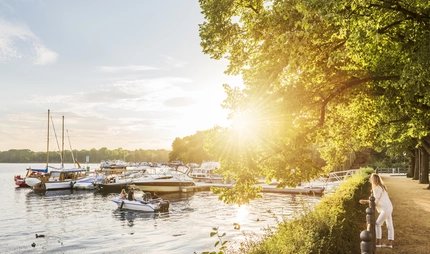
Berlin’s Animal Side
Experience the capital’s “jungle” up close by bike
In addition to culture, water and greenery, Berlin offers a further highlight: many native and rare species of animals romp about in the capital’s “jungle”. From goats and sheep, chickens and water buffaloes to bats, ponies, mouflons wild sheep and pigs – the diversity of Berlin’s fauna is impressive. With binoculars and some provisions you can undertake a wonderful journey of discovery on a day trip in the north-west of Berlin by bike.
Children’s farm adventure playground
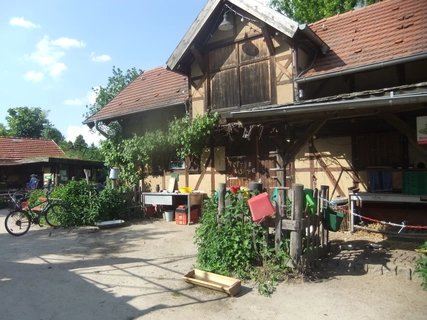
Our animal discovery tour through Berlin starts not far from the S-Bahn station Wollankstraße in the district of Pankow. Since 1991, employees and many volunteers have created a rural oasis in this part of the city on a former section of the Berlin Wall. You would be forgiven for thinking that the Town Musicians of Bremen have found their new home here: donkeys, cats, chickens and pigs live together with many other animals on the Kinderbauernhof Pinke-Panke.
The adventure and learning place offers a lot of space for young people and adults to acquire experiences playfully with the animals living on a farm. Besides feeding the animals, you can watch and pat them, bake bread in the mud hut, learn about traditional handicraft techniques or enjoy country life on the bench with a mug of coffee in your hand. Rejuvenated, you will then cycle on the longest stage of our animal tour further west towards Reinickendorf.
Diverse nature from Lake Tegel to the Wildgehege game reserve in Spandau
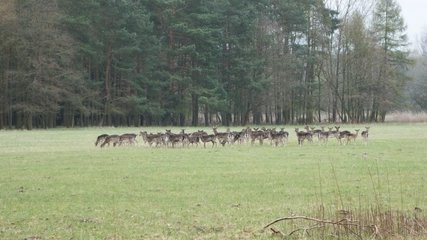
Before discovering fallow deer, mouflon wild sheep, roe deer and wild boars, you first have to pedal hard. The next stage destination is the game reserve in the Spandauer Forst (Spandau forest) and the journey there is a good 20 kilometres. But the way there is varied and always worthwhile. After 10 kilometres you will reach the Borsigdamm lakeside path, which offers a wonderful view of Lake Tegel. The route continues straight on, along the lake and through the southern part of the Tegeler Forst (Tegel forest). In Tegelort you will board the only car ferry still being operated in Berlin. The ferry commutes daily between Tegelort and Hakenfelde in the district of Spandau. 160 metres of Havel river lie between the two banks and the crossing takes only a few minutes. Of course not only cars can board the ferry: pedestrians, cyclists and if you are lucky even horses are allowed on too.
Not far from the jetty in Hakenfelde is the Spandauer Forst with the Teufelsbruch nature reserve and the Wildgehege game reserve. Ride on to Schönwalder Allee and park your bike there. Walk a few metres into the forest, behind the foresters’ house lies the spacious enclosure. Spandauer Forst is one of the largest, most beautiful and species-rich forests in Berlin. On a walk to the carp pond or on a tour around the capital’s largest game reserve, you can now watch red deer and wild boars in their natural habitat. Keep your eyes and ears open in the forest and you may also see other forest-dwellers such as badgers, raccoons and even kingfishers. Have your binoculars and a camera at the ready. Insider tip: there is a café in the game reserve that serves coffee and cake.
Rare animal species in the Tiefwerder Wiesen
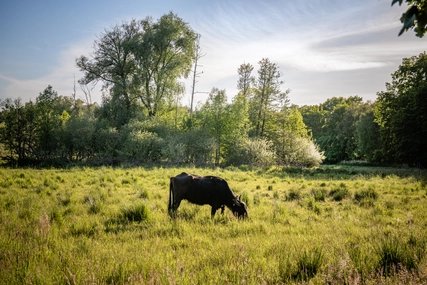
Back on your bike, the route heads south on Schönwalder Allee to Spandau’s Old Town. The green idyll is now followed by a bit of urban life - from a distance you can already see the tower of the imposing town hall. Just behind the train station, Ruhlebener Straße crosses the Havel river, shortly after you leave the main road and continue on to Pichelswerder.
The island lies between Pichelssee and Stößensee, a little north of it is the Tiefwerder Wiesen landscape conservation area. The natural flood plain is crossed by many old branches of the Havel river, a plank bridge guides you across the marshes. On almost 70 hectares, the area offers a unique habitat for many rare plant and animal species. For example, the last Berlin pike spawning ground is located here and beavers have also returned to the area. In 2011, water buffaloes were settled on the Tiefwerder Wiesen for alternative grazing, and patient observers can watch the cloven hoofed animals bathing and grazing.
Breathe in the country air on the Vierfelderhof family farm
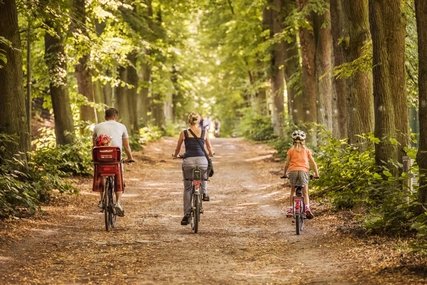
Our animal journey takes us further south past the Scharfe Lanke and the Marina Lanke bays. Stop quietly, take a deep breath and enjoy the view of the Havel. On the Havel cycle path the route continues to head south from here on in. Once you have passed the Windmühlenberg, the Vierfelderhof can be found not far from the Kleine Badewiese. The children’s and family farm in Gatow is run as a non-profit organisation and offers 90 hectares of space for organic farming as well as outdoor enclosures for livestock farming. Whether ruminants, wild animals, rabbits, chickens, crawling animals, wild plants or edible plants – at the Vierfelderhof, species-appropriate farming methods and care are of utmost importance. Therefore, apart from feeding and caring for the animals and plants, rural life also includes harvesting, mucking out the stables, building fences and nesting aids or collecting wood.
All visitors to the farm can discover the rural working and living environment at close quarters and learn to understand the ecological, economic and social interrelationships. In addition to understanding regional economic cycles, you will also enhance your consumer competence. After this ecological crash course, every city dweller leaves well prepared for the capital’s “jungle”.
By the way, the Vierfelderhof offers all kinds of regional delicacies at its Hofcafé. Before you embark on the final leg of your journey, you can take a break here and buy a souvenir in the farm shop.
Attention: The Vierfelderhof has currently severely restricted its offer. Before visiting, it is best to check the official website for the current situation.
Night walk with bats
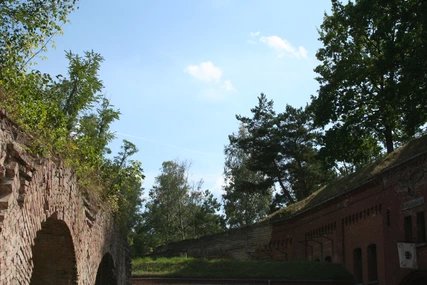
The first thing to know about this: speaking is strictly permitted! This is what the nimble bats, which you are about to get to know, particularly like. Before that, however, we will set off on the final leg of our city expedition across country through the Rieselfelder Karolinenhöhe conservation area to Fort Hahneberg. Until the fall of the Wall, Germany’s last new fortress construction lay in a decades-long slumber in the area of the Heerstraße border crossing, allowing flora and fauna to spread unhindered. Thus the fort has also become an important place for bats. Guided tours are offered at dusk, where you can learn a lot of interesting facts about their habitat, the different species, hunting habits and tracking systems of these unique mammals. You should bring sturdy shoes and a torch for the tour and reserve a ticket online in advance. The guided tours are very popular and often booked up early.
Fortified with so many impressions of different animals, you can now freewheel down the Hahneberg to the Berlin-Staaken station to end the tour. The regional trains will take you and your bike to Spandau Old Town or to Berlin Central Station.
Information about the tour:
- Start: Kinderbauernhof Pinke-Panke, Pankow
- Destination: Fort Hahneberg, Spandau
- Tour-duration:one day (including sightseeing, breaks; Note: If you want to avoid the first longer stage, the tour can also begin at a later starting point)
- Cycle distance: approx. 43 km, approx. 2.5 - 3 hours riding time
Culinary tips:
- Hot chocolate, coffee and cake at the Kinderbauernhofs Pinke-Panke
- Café Gartenlaube on the grounds of the Ev. Johannesstift church
- Kiosk kleinen Badewiese

